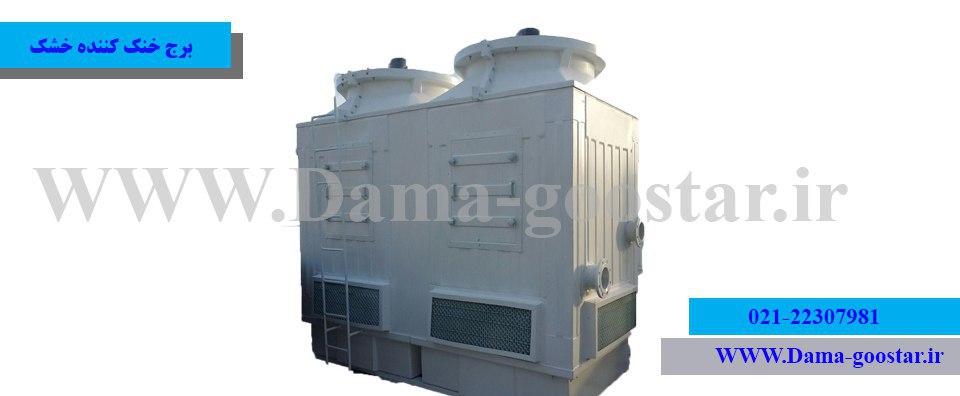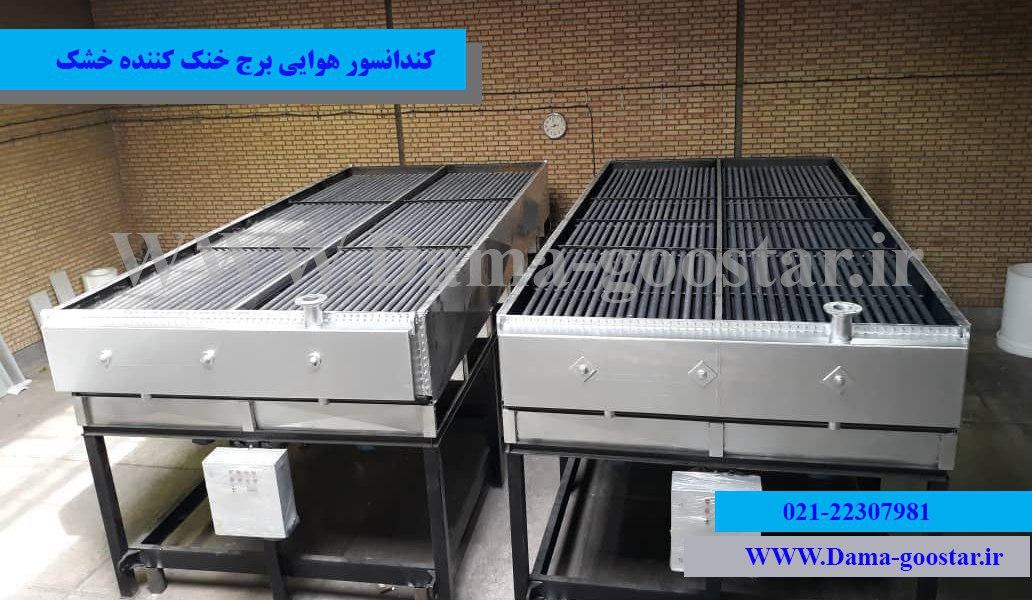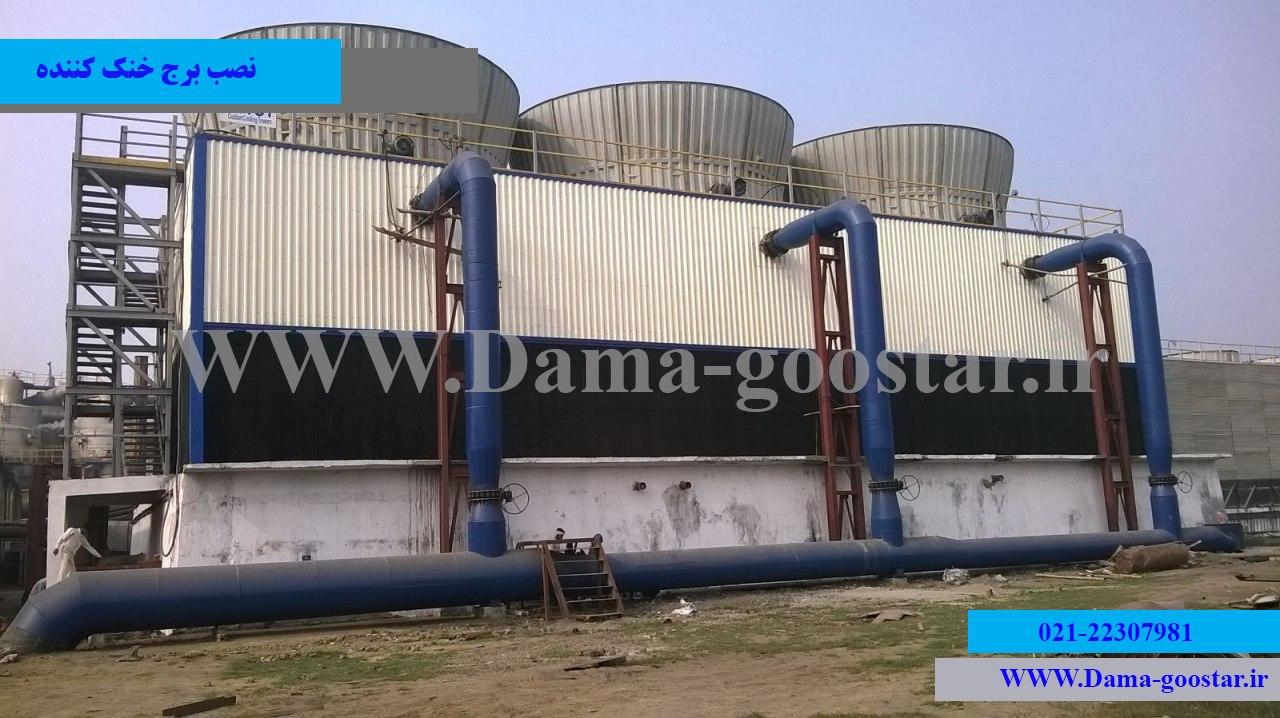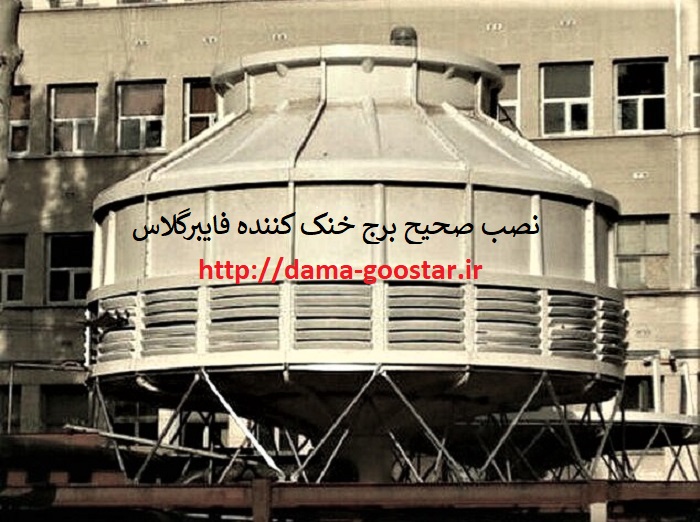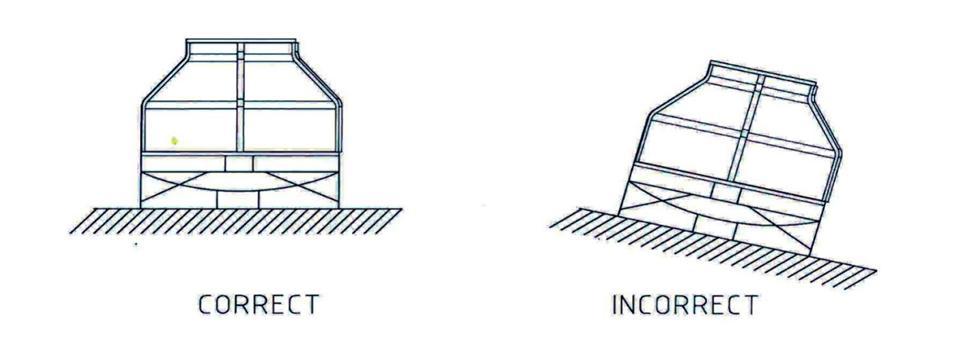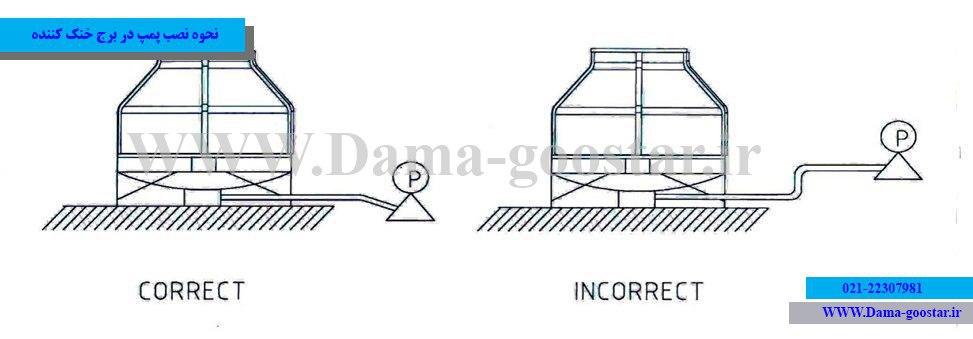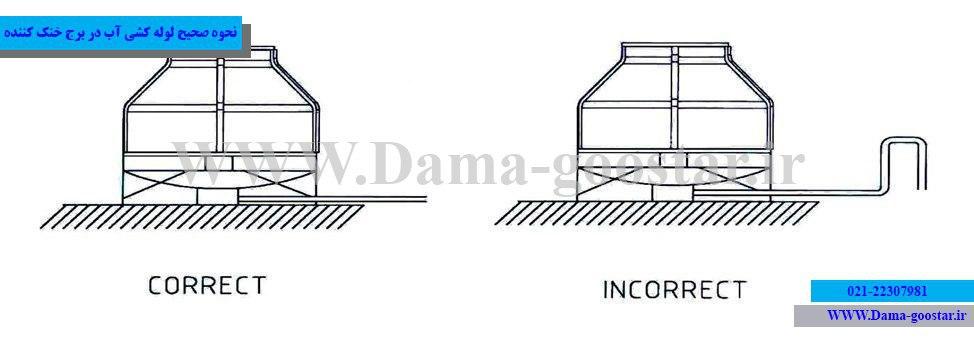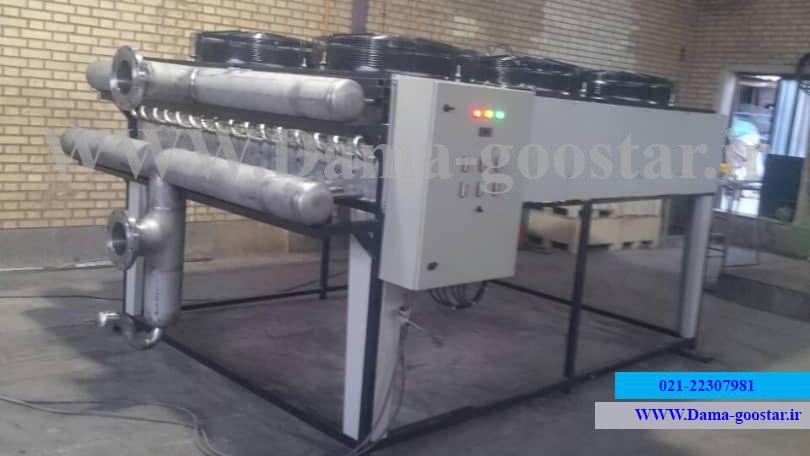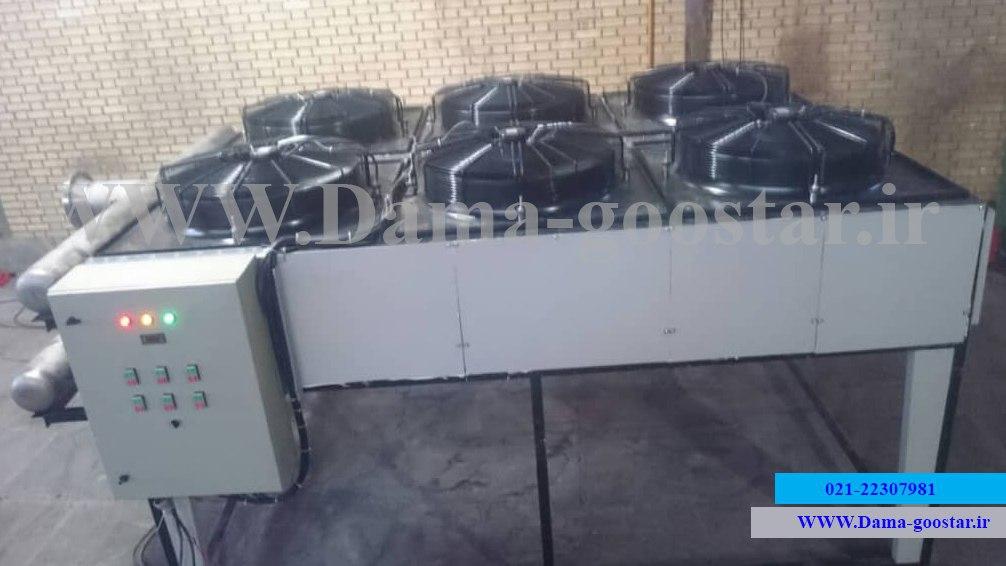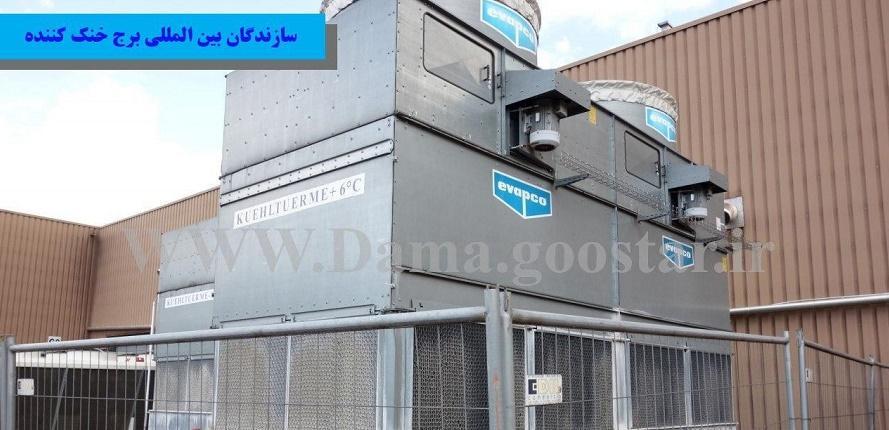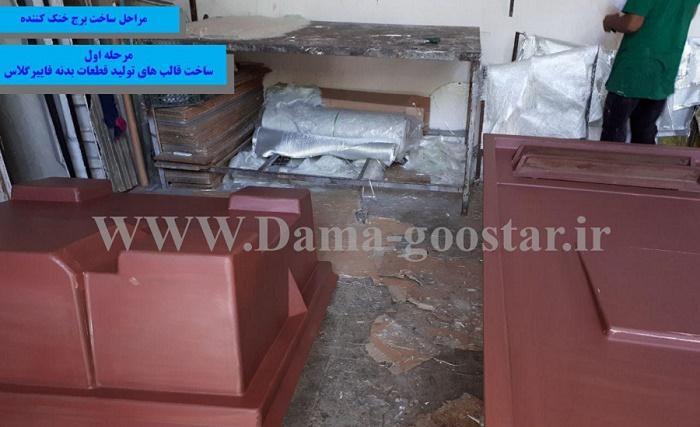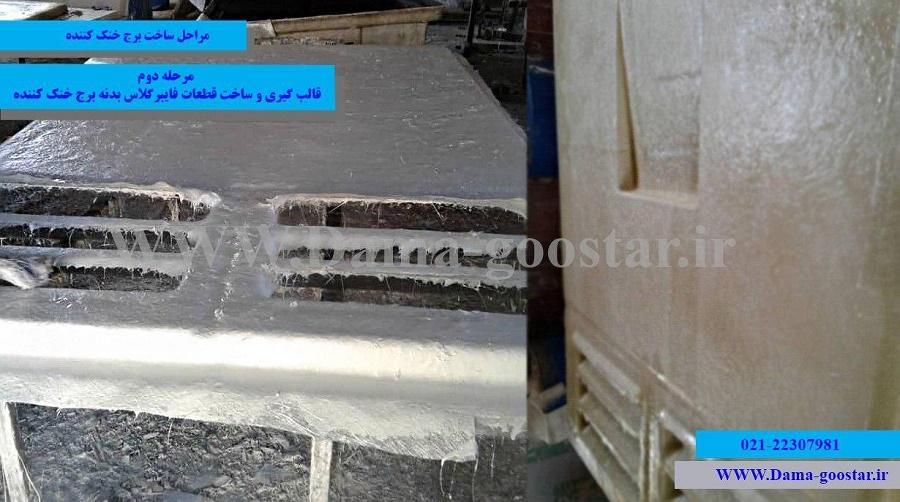Dry Cooling Tower ( Dry Cooling Tower ) is a type of cooling tower with a water circulation system in a closed circuit in which the flowing water in the cycle of this cooling model flows inside a coil (indirect contact surface) and cools in contact with air flow . A dry cooling system is a type of CCTV cooling tower in which the contact between the weather takes place in an indirect circuit.
Is a dry cooling tower suitable for all areas?
In answer to this question, we must say yes, but this equipment is very suitable for desert, dry and cold areas, because this device, unlike the wet cooling tower, will not consume water and also lowering the temperature will increase its efficiency. Areas such as Urmia, Tabriz, Shiraz, Mashhad and other cold and temperate cities of the country are very suitable for this model of cooling system in their equipment. Even in areas such as Yazd, Kerman and Isfahan, which are facing the problem of dehydration and dehydration, dry cooling towers are a good option for cooling industrial cycles.
Dry cooling tower or air condenser ????????
In answer to this key question we must ask both of these words actually have the same meaning. Dry cooling works very much like a heat exchanger ( Heat Exchanger ) between the weather, which is why this device is also called an air condenser ( Air Condenser ). In simpler terms, a dry cooling tower or air-cooled condenser consists of a coil and an aeration system that is used to reduce the temperature of hot water to close to the dry temperature of the environment.
Comparison of dry and wet cooling towers :
- Dry CCTV towers actually reduce the water consumption of refrigeration systems and are very suitable for places where water supply is difficult. In a wet cooling water in direct contact with the air in the levels of cooling or filling the heat loses and while in Dry coolers flow of water in a closed cycle ( Close Circuit ) in contact with the air flow induction technology Is located and in contact with the induced current, the fan loses heat and the temperature decreases.
- The performance of a dry or closed cooling tower depends on the dry or tangible ambient temperature ( Dry Bulb Temperature ), while a wet queen tower depends on the humid ambient temperature ( Wet Bulb Temperature ). In hot seasons, such as summer, the cold water outlet temperature of the dry CCTV cooling tower increases and does not have the previous cooling, and this causes some designs to use a combination of CCTV and open circuit cooling tower together, in which case This device is also called a hybrid cooling tower .
The most visited content of Damagostar site: cooling tower calculations
How the dry cooling tower works
In a cooling tower circuit or the so-called cooling tower dry, water flows through a coil ( Coil ) or cross-section of capillary tubes and thin, and the air flow is also in contact with the outer surface of the coil is located and it also absorbs thermal energy from It becomes water.
It is better to use the coil in the design of closed tower cooling inside the dry cooling tower.
The coil in a dry cooler actually acts like the cooling surfaces or packing media in a wet system. Coil is a network of fin tubes ( Fin Tubes ) or without fin, which generally has pipes of metal materials with high heat transfer coefficient such as copper, aluminum and steel. In a dry cooling tower, this network of narrow pipes (coils) is responsible for creating the surface of thermal penetration ( Conductivity ). The coil interface wall in a dry cooling tower closes the cycle and indirect contact of two weather fluids.
Is the presence of a fan in the design of the coil in the dry CCTV cooling tower mandatory ??
The fins used on the outer surface of the coil in the dry cooling tower are generally made of easy-forming aluminum material with the aim of creating a higher heat transfer surface. The special surface of the coil as well as the density of the fin in the coil will increase the refrigeration capacity of the cooling system. Correct calculation of the specific surface area of the tube and fin in the CCTV coil is one of the basic parameters in how the dry cooler works.
The main components of a dry cooling tower
CCTV towers generally have three main parts. The body and support structure, condenser coil and aeration system including impeller and electric motor are the main parts of dry cooling tower .
1. Body ( body and Frame ): The body of the structure, the main storage device and includes different sections, including the Louvre ( Louver ) or shutters air intake, fan stack or deck Fan ( Fan Deck ), pan ( Basin ) and panel ( Panel ) Or the wall and chassis holding the coil. In some examples of dry cooling tower (galvanized CCTV tower), a simple chassis is generally used to hold the coil, and equipment such as a pan or fan stack is no longer used. Temperature Company offers the highest quality air coolers and dry cooling towers by offering fiberglass body.
The new generation of dry cooling towers with fiberglass body actually has a very high resistance to sunlight and also a very high resistance to ambient humidity. Also, replacing fiberglass with galvanized will increase the body's resistance to decay and corrosion. Weight loss and easy portability and maintenance are other advantages of fiberglass body of dry cooling towers produced by Damagostar company.
2- Coil : This part is the most important part in the CCTV system in the dry cooler and the purpose of the coil in the CCTV tower cooling is actually to create the penetration level of heat transfer (like cooling tower packing). In order to increase the efficiency of the CCTV cooling tower, the most important part is the selection of components in this section. In fact, the nature of the coil, the number of rows of coils, the density of the fin and the number of pipes per row have a significant effect on the efficiency of the cooling tower.
3. Air Flow System : Air flow system plays an important role in heat transfer and heating energy. This part includes fan or impeller , electric motor and power transmission system. Creating induced flow in air and contact of this air with the surface The coil wall is the most important act in heat transfer, so adjusting the aeration rate will have a significant effect on the capacity of the dry cooling tower.The impeller diameter, the number of fan blades and the impeller circumference are the most important factors influencing the aeration rate.
Different parts of aeration system in dry cooling tower:
A) Fan or impeller: This part actually provides relative pressure in the surrounding air and as a result causes air displacement (induction current).
B) Motor: This part provides mechanical energy to provide the required torque of the fan rotation in the cooling tower.
C) Transmission or speed reduction system: This part actually reduces the output speed of the electric motor to the standard size of the fan speed in the cooling tower and is known as the cooling tower speed reduction system .
The best-selling product of Damagester Company: cooling tower
Advantages of dry cooling tower
- Maintenance and use of this equipment is very cost-effective and low cost (without water consumption)
- No environmental pollution, including increasing humidity, reducing the amount of water in aquifers (due to the lack of compensatory water)
- No sedimentation and water pollution problems in the condenser and no need to scale the condenser pipes periodically
- Ability to control the amount of electricity consumption in the aeration and ventilation sector (reducing electricity costs in cold seasons)
- Easy to carry and move due to lack of circulation of large volumes of water in the CCTV cycle
- Easy maintenance due to no deposits, corrosion and rot
- Dual-purpose usability (both cooling and heating)
Disadvantages of dry cooling tower
Increase of cold water outlet temperature in hot seasons (due to noticeable increase of ambient temperature)
Poor performance in hot seasons in hot and dry areas in water cooling (low efficiency)
High initial cost for coil use (economic inefficiency)
Lower efficiency than wet cooling tower
High sensitivity during installation
Requires ancillary equipment such as expansion source, drain source and suction pump for dewatering and draining cold water in closed circuit
Important Note: According to the mentioned cases, it is recommended to use the hybrid cooling tower system in case of compensatory water shortage.
Types of dry cooling towers
Dry Cooling Tower Cooling is divided into different categories in terms of condenser body material and coil pipe material. CCTV cooling is produced and supplied in two general types of metal body and composite body in terms of body material. Dry fiberglass cooling tower is actually produced only in the cubic type and the reason for this is the cubic structure of the coil structure. Dry cooling tower with fiberglass body has more resistance to environmental damage than galvanized cooling.
Be careful in choosing the coil material in the design of the dry cooling tower.
Dry cooling coils are produced and supplied in various materials such as copper, 304 steel, 316 steel, stainless steel, carbon steel, API steel and seamless manganese pipe. According to the fluid conditions, ie the amount of corrosion, solutes in the fluid and other parameters, coils of different materials are also recommended in the design of the CCTV system. For example, for cooling soft water, the best option in all types of dry cooling towers is copper coil with high conductivity, while for cooling acid or acidic fluids, the best option is SS316 steel coil . Of course, for high hardness waters (with salt), SS304 is the best option for steel coil material .
The most cost-effective choice of coils in the dry cooling tower
The most suitable coil type in terms of initial price for cooling water is galvanized coil (seamless and seamed). Due to the low thermal penetration coefficient of this metal, coils with this type of metal are generally used in large quantities of galvanized pipes in the design of CCTV cooling towers. Seamless pipe type is used when the pressure of the circulating water flow in the closed cycle is more than 3 times.
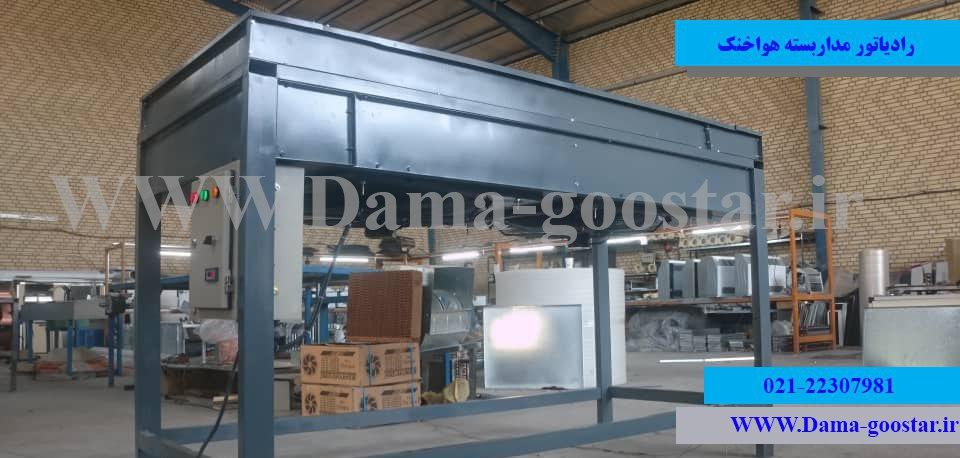
Dry cooling tower price
CCTV cooling towers are much more expensive than open or wet cooling tower types. The price of this closed cooler model depends on several factors such as refrigeration capacity, coil material and body material. Therefore, numerous and innumerable parameters will be effective in determining the price. The highest price of dry or closed cooling tower belongs to SS316 stainless steel coil cooling system. The design of dry cooling tower with copper coil is in the next category in terms of final price, but on the other hand, due to its high thermal penetration coefficient and reasonable price, this equipment is one of the best-selling products of the cooling tower.
Factors affecting the price of cooling towers
Hans coil used in closed loop in CCTV tower
Tube thickness
Pipe diameter and pipe area used (Tube OD)
Fin thickness
The main chassis material of the coil and the material used in the tube sheets
Thickness of body and main structure of fiberglass or sheet steel
The electric motor power of the aeration system as well as the type of impeller used in this section
In fact, the above factors are the basic parameters for determining the price rate in a dry cooling tower. In the coil will have a significant impact on the final price of the dry cooling tower.
Price fluctuations in the raw materials market = instability of the cooling tower price
The price of dry cooling tower will fluctuate constantly due to the constant fluctuations of the copper, steel market, as well as the fibers and resins used in the fiberglass body. The production unit of Damagostar Company is exempted from providing the cooling tower price list for the above-mentioned reasons. It is suggested to contact the company's experts in order to estimate the exact price of such industrial coolers, and after designing and calculating the special surface of the coil and the refrigeration capacity of this device, receive the estimated price in written and oral form.
